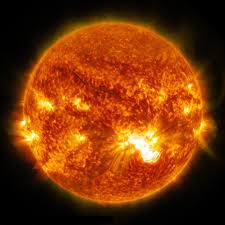
Minnesota Skies: December 2019
Your local guide to observing celestial objects and events
Published11/25/2019 , by Deane Morrison, Thaddeus LaCoursiere & Sarah Komperud
December opens with Jupiter dropping into the sunset. On the 3rd, Saturn, Venus and Jupiter form a diagonal line with Jupiter in the sun’s afterglow and brilliant Venus almost exactly midway between the other two planets.
As Jupiter sinks, Venus climbs. In the second week of the month, Venus passes much dimmer Saturn, coming closest on the 10th and 11th. On the 28th, Venus comes out above a thin young crescent moon; together, they form a celestial semicolon.
In the east, the knot of bright winter stars assembles for viewing by about 10:30 p.m., earlier as the month goes on. If you have lots of nights with clear, dark skies, try locating the constellation Perseus (a star chart will really help). Find the brilliant star Capella at the top of the winter assembly and look to the right to find the Pleiades star cluster. Then look at the space immediately above and between them. You’ll see scraggly Perseus and its brightest star, Mirfak. Slightly lower and to the right of Mirfak is Algol, the constellation’s second-brightest star, whose name comes from the Arabic for “the demon.”
The “Demon Star’s” brightness varies noticeably every two days, 20 hours and 49 minutes. That’s because Algol is a triple star, and when a dimmer one passes in front of the brightest one, we see a dip in brightness. Algol was regarded as the winking eye of Medusa, the snake-haired monster slain by the mythical Greek hero Perseus.
Excerpted from Minnesota Starwatch by Deane Morrison, a publication of the Minnesota Institute for Astrophysics at the U of M.
Featured image: The Pleiades, also known as the Seven Sisters and Messier 45, are an open star cluster in the constellation Taurus. See “Deep Sky Objects” below for more.
Lunar Highlights
December 4—First Quarter Moon
The Moon is one quarter of its way through its orbit around
the Earth, which makes half the Moon illuminated and half
dark from our perspective.
December 11—Full Moon
The Moon is located on the opposite side of the Earth as the
Sun and the side we see is fully illuminated.
December 18—Last Quarter Moon
This phase occurs when the Moon is three-quarters of the
way through its orbit around the Earth.
December 25—New Moon
The Moon is located on the same side of the Earth as the Sun
and is not visible in the night sky. This is the best time of the
month to observe faint objects like galaxies and star clusters
because there is no moonlight to interfere.
Deep Sky Objects
How do astronomers determine our distance from faraway stars? One way is by measuring the difference in a star’s brightness over a period of time.
One of the best-studied variable stars is Delta Cephei, located in the constellation of Cepheus, the King. Every 5.366208 days, Delta Cephei cycles from its brightest to its dimmest and back to its brightest. This change in luminosity (or how bright the star is) is small, but astronomers did observe it, especially once photographic plates were developed.
Henrietta Swan Leavitt used these plates to graph star data while working as a “computer” at Harvard College Observatory starting in 1903. The relationship she found between a variable star’s luminosity and period lets us determine its brightness, regardless of what we can see from Earth—and that information helps us determine our distance from the star.
Leavitt’s work has been used ever since then, notably by Edwin Hubble in 1924, who determined the distance to Cepheid variable stars in “spiral nebulae” like M31. Leavitt’s period-luminosity relationship and Hubble’s measurements determined the first distance to M31 and provided the first proof that our Milky Way Galaxy is not alone in the universe!


